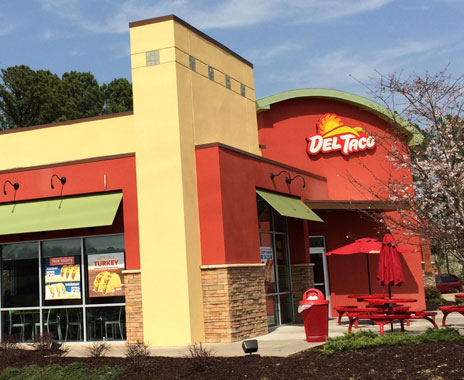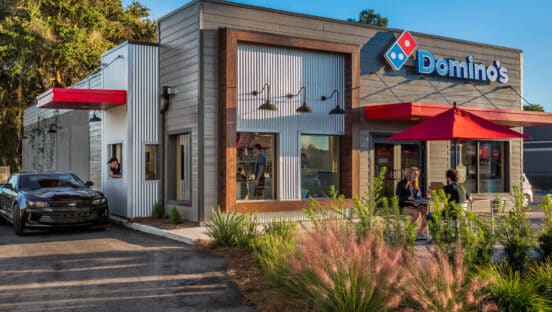John Cappasola, the chief executive officer of Del Taco Restaurants Inc., has seen a shift in value across the quick-service industry. Bundles, and specifically those priced around $5, are infiltrating the marketplace, putting stress on some brands to lower prices or offer new menu items that come at a heavy discount.
During a conference call Thursday, Cappasola said this strategy could boost traffic in the short term for some, but it’s not a long-term fix. And it’s not the kind of innovation he wants Del Taco’s more than 550 units to be known for.
“We’ve always said we don’t want to ever be in a position to have to pivot to value. We just want to be known for it,” he says.
For Del Taco, the plan, as it’s been for years, Cappasola said, will be to highlight the brand’s value offerings, not surprise guests with them. In the third quarter, the second-largest Mexican chain in the U.S. reported comparable restaurant sales growth of 4.1 percent, and company-operated growth of 3.7 percent, marking the 16th and 21st consecutive quarters of gains, respectively. That brings growth to 10.8 percent each based on a two-year stacked basis.
The numbers were in line with Wall Street expectations, according to Zacks Investment Research. The average estimate of four analysts surveyed by Zacks also called for earnings of 13 cents per share, which the brand hit. Del Taco posted revenue of $111 million. Shares have climbed 9 percent on the stock market since the beginning of the year for Del Taco and reached $15.39 late Thursday—a climb of 11 percent in the past 12 months.
The numbers weren’t quite as boosted as the second quarter, where comps increased 7.1 percent system-wide. Cappasola credited that decrease to cost pressures driven particularly by food inflation, especially with avocados, which were “a 1.5 percent of our food basket item,” said Steven Blake, Del Taco’s executive vice president and CFO, in the call.
“When it’s priced essentially right about double, that moment in time from a normalized historical price, it certainly can end up having a significant dollar impact on the year at hand,” he said.
Food inflation led Del Taco to lower its expectations for restaurant margins in its financial outlook. It now expects contribution margin between 19.5 and 19.8 percent, down from 19.8 and 20.3 percent. Del Taco also reduced its earnings to 52–54 cents per share from a top range of 55 cents.
But overall, the results were positive for Del Taco. A key area of optimism remains centered on menu innovation, including the brand’s Queso Blanco, which Cappasola said is mixing at about 7 percent in each of the first six weeks since its launch. To compare, the previous legacy nacho cheese product was at 2 percent. The introduction of the item, made with real cheese, milk, jalapeños, and heavy cream, with no artificial colors, flavors or preservatives, also allowed the brand to ditch the equipment used to make the nacho cheese in the past.
The platos, which pair entrees with sides, such as the popular Wet Burrito Platos, drove Del Taco’s dinner daypart, Cappasola said, and were the No. 1 same-store sales contributor in the third quarter. The brand also debuted a “very successful” carnitas LTO to start the quarter. The item, which hadn’t been on Del Taco’s menu for three years, mixed over 5 percent and peaked over 6 percent, he said.
Carnitas is exiting the menu, however. Cappasola said it drove high demand and generated high check averages. Queso, on the other hand, is broadly priced across all tiers of the menu, and will allow Del Taco flexibility to innovate even further.
Queso will be leveraged across Del Taco’s “barbell menu strategy,” starting with the new Buck & Under menu that continues to grow. A Queso Chicken Roller recently launched in fall. Del Taco will feature queso at that $5 price point as well with the Epic Queso Chicken Burrito, A Epic Grilled Chicken and Avocado Burrito is also coming at a premium price.
“Queso is featured in a number of products and reflects Del Taco’s continued innovation within the premium ingredients space to further and better [quick-service restaurant-plus] position,” Cappasola said.
“We’re leveraging innovation to drive interest visits and sales, definitely leaning into our value strengths, and we feel good about where we’re positioned to continue to work through this environment with positive same-store sales trends,” he added.
Blake said the broad potential of queso was a deliberate move to offer customers of all price points entry into the product. It’s accessible across dayparts and check averages, such as the premium Queso Loaded Nachos, which are coming in “the next several weeks.”
“I think we’re in great shape with Queso overall. The guests love it, so that’s point number one that you need to accomplish. So now we can take advantage of that, and really leverage it more broadly on our menu, depending on the needs of the business. And we’ve said it can be used for traffic driving reasons, it can be used for check driving reasons, and we intend to use it in both ways,” Blake said.
Del Taco opened two restaurants in the third quarter and its franchise partners opened two others. One company store closed. So far in the fourth quarter, the company has debuted three restaurants and has 11 (two franchised and nine company) under construction.
Cappasola said the franchise conversation is picking up momentum. There are four deals signed in the Southeast and he expects a similar growth rate in 2018 as Del Taco has experienced so far this year—mid-single digit acceleration. “We view that as a long-term opportunity for the brand. And we have focused and taken that very disciplined approach to start out in the Southeast with that Southeastern hub that we’ve talked about,” he said.
This is a continued push that started in 2017. The growth was about double what Del Taco experienced in each of the previous three years.
Del Taco is also advancing its technology initiatives. Blake said it’s possible kiosks and other strategies could arrive in the future to take labor-hour pressure off the front counter.
For now, the company’s online ordering and mobile app pilot through Olo is available in more than 50 restaurants. The tests are taking place in Las Vegas.
“We like what we’re seeing from an ops execution and average check standpoint. But we’re still working to perfect the model for usage and what’s already a very fast and convenient dining experience environment,” Cappasola said.
Del Taco recently partners with GrubHub and is actually testing that process right now at some stores in Southern California. “I think we are in a good position to be able to use some deployment on a wider scale as we think about 2018 and beyond, as long as we continue to make good momentum and progress on some of the consumer demand dynamics,” he said.






